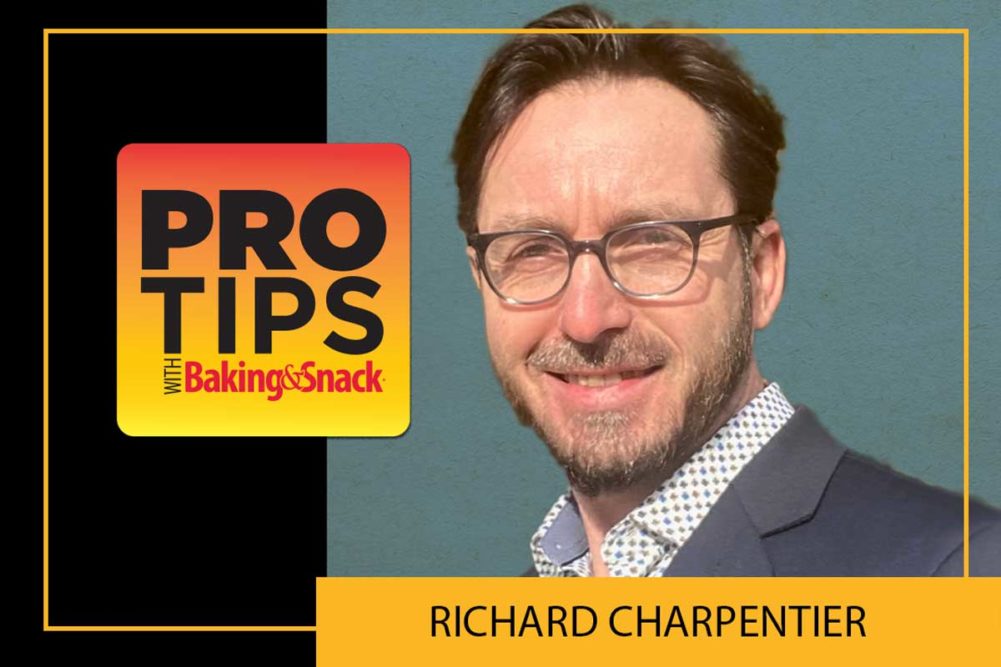Pro Tip: Bakers can choose the appropriate fat or oil by understanding the functional use of each.
Fat is a critical ingredient in baking, used in products like cookies, muffins, cakes and pastries. Without fats, these bakery goods would not look or taste the same. Various fats and oils used in the baking industry come from either an animal or vegetable source and have different functional properties to improve appearance, flavor, palatability and texture.
What is the difference between “fats” and “oils”?
Fats and oils consist of fatty acids and glycerol, in which three molecules of one or more fatty acids are combined with one molecule of glycerol to form a triglyceride. Triglycerides that are solid or semi-solid at room temperature are referred to as “fats;” triglycerides that are liquid at room temperature are referred to as “oils.”
Bakers have relied on butter, margarine, shortening, emulsified shortening and liquid oils to create their baked goods. A product developer can choose the best fat based on how they function.
Butter
Butter is a water in oil emulsion containing approximately 80% butter fat and approximately 14% water with a melt point between 80F to 95F. Butter is considered the best from a flavor standpoint but does not have creaming properties. Butter is good for laminated dough but requires good control of temperature.
Margarine
Margarine is essentially a water in oil emulsion, containing a minimum of 80% fat plus water, milk solids, salt, emulsifiers and certain other ingredients designed to mimic butter in flavor and mouthfeel. The melt point of margarines can be changed and adjusted to meet customer demand.
There are 3 types of margarine:
- Soft, spreadable margarine, which can be used for cakes and muffins.
- Hard at room temperature and used in laminated pastries and pie crusts.
- Liquid margarine.
Shortening
Made from vegetable oils, shortening is an edible fat with a neutral flavor and solid at room temperature. Since it has a higher melting point than butter, it is usually used in pastries and pie crusts as it shortens gluten strands that create a tender and flaky end product.
Shortening is also used for creaming because it can trap large volumes of air during whipping, allowing baked goods like cake to have a lighter, softer texture and a better rise. Overall, it’s a good vegan and dairy-free substitute for butter.
Liquid Oils
As the name implies, liquid oils are liquid at room temperature and are moisture-free and neutral in flavor, such as vegetable, canola, grapeseed and avocado oils. These oils are used to a lesser extent in cakes because the need for solid fats to assist in structure formation, as is the case with cookies and crackers. Liquid oils tend to keep baked goods softer and more moist for longer because they do not solidify at room temperature. Other liquid fats like olive oil can be used in baking but will add flavors that might be undesirable for finished products.
Emulsified Shortening
These shortenings were developed for use in large-scale cake manufacturing and are combinations of fat systems and monoglyceride surfactants, such as polysorbate 60 and sorbitan 60 added to improve aeration.
Storage of Fats and Oils
Storage temperature is critical to the functionality and shelf life of fats. For example, exposure of fats to temperatures above their melting point will produce permanently impaired creaming properties even when the fat is cooled to normal room temperatures. Heat has a definite accelerating effect on rancidity development of fats. It has been estimated that the rate of rancidity doubles for every 18F increase in temperature. As a result, fats must be stored under controlled and recommended conditions.
Fats and oils used in the bakery | |
Products |
Range in Bakers % |
Breads and Rolls |
2% to 5% |
Brioche Bread |
20% to 60% |
Croissant |
20% to 40% |
Cakes |
20% to 50% |
Sweet Goods |
10% to 30% |
Pie Crusts Fried |
20% to 30% |
Pie Crusts Baked |
35% to 60% |
Cookies |
20% to 70% |
Crackers |
7% to 10% |
Donuts Cakes |
5% to 9% |
Donuts Yeast |
6% to 13% |
Richard Charpentier is a classically trained French baker, CMB, holds a degree in baking science from Kansas State University, and is owner and chief executive officer of Baking Innovation. Connect with him on LinkedIn.






